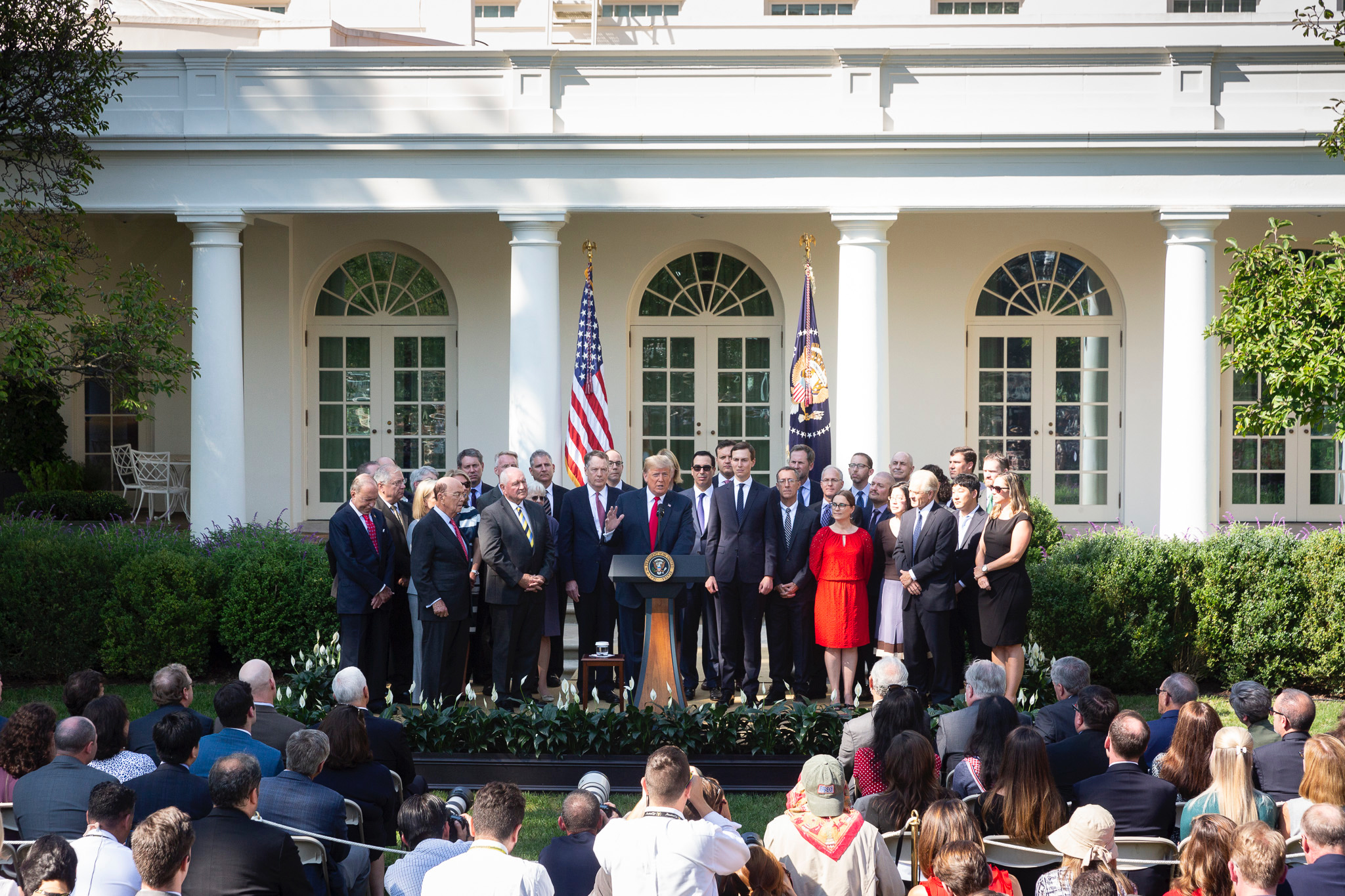A nation must think before it acts.
The announcement of a new trade agreement among Mexico, Canada, and the United States (the so-called U.S. Mexico Canada Agreement, or USMCA) made headlines earlier this week. But beneath those headlines, it is difficult to discern what the agreement would mean for those countries and how it differed from the arrangements already in place. The issues at hand—including, among others, Canada’s dairy market, intellectual property, and dispute settlement between member countries as well as investors—have been controversial since the inception of the North American Free Trade Agreement (NAFTA), and even before.
This new agreement is now at least the fifth trade deal involving at least two of the trading partners. The first was a 1965 trade deal between the U.S. and Canada that focused on automobiles; the second was the Canada-United States Free Trade Agreement, put in place in 1987; the third was NAFTA; the fourth was the stillborn Trans-Pacific Partnership, which included the U.S., Mexico, and Canada along with eight other signatories. And as a bonus, there’s the World Trade Organization (WTO), of which the U.S., Mexico, and Canada are all still members. What were the North Atlantic countries able to agree on in this new deal that marks a substantial change from what preceded it?
Ironically, many of the differences can be traced to what was previously labeled a “bad” deal for the U.S.: a substantial portion of USMCA innovations—particularly in intellectual property—comes straight from the Trans-Pacific Partnership, which the U.S. never ratified even though it was influential in setting the terms of the deal.
But although the USMCA looks like big news, we’ve seen these patterns before.
First, it’s not uncommon for politicians to rebrand existing agreements, while little of the guts remain unchanged. It’s far more eye-catching to announce a brand-new agreement, rather than to work within the confines of existing agreements. Signing ceremonies and new acronyms stick in voters’ minds more durably than simply tinkering with an agreement that already is in place—even if the new agreement only includes minor changes.
This happens all over the world. In Central America, depending on how you count, leaders put into place three supposedly different agreements—the 1951 Organization of Central American States (ODECA), the 1960 Central American Common Market (CACM), and the 1991 Central American Integration System (SICA)—all with the same aim. More broadly in Latin America, agreements often overlap: how do we differentiate among the integration efforts of the 1980 Latin American Integration Association (ALADI), the 2004 South American Community of Nations, and the 2007 Union of South American Nations? Such agreements are often old wine in new skins; the improvements they offer over existing agreements tend to be incremental.
Second, new leaders often disrupt the patterns of preexisting trade agreements. It’s common for trade deals to languish when new leaders come to power, either because they stall in the ratification or if the leader simply puts them aside at the expense of other priorities.
Third, a closer look at the provisions of the USMCA shows that very few of them center on trade per se. They have more to do with what are known as “new trade issues,” or things that amount to non-tariff barriers—intellectual property and rules of origin, for example. It’s these kinds of issues that ground the WTO rounds of liberalization to a halt already in the early 2000s. Non-trade issues are complicated, often reflecting country differences in what they consider to be crucial for national security or national identity. That makes them difficult to negotiate between trading partners, and it’s why these issues often end up in international courts rather than at the negotiating table.
It’s true that it can be easier for smaller groups of countries to find common bargaining ground, rather than in broader multilateral settings. But this reflects a pattern of trade negotiations all over the world. Liberalizing tariffs was the easy part; now that countries’ economic exchanges are getting into the murky ground of regulations and standards, the gains from further trade negotiations are likely to be marginal.
So although the supposedly new NAFTA deal looked splashy at the beginning of the week, it’s part of a broader pattern of political gains from announcing seemingly new deals. We’re still far from seeing the real effects of the deal. It faces the same hurdles of trade agreements everywhere, and it may suffer similar fates.




